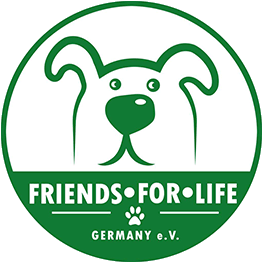Particularly in large dog breeds, under certain circumstances a so-called gastric torsion can occur, in which the animal’s stomach twists to such an extent that both the stomach entrance and the stomach exit are closed. This creates serious and life-threatening dangers for the dog and therefore the dog owner should consult a veterinarian immediately in such a case.
How does gastric torsion occur?
The causes of gastric torsion in dogs, which primarily affects dog breeds such as the Great Dane, the German Shepherd and also the Setter, are still debated by experts to this day. Some veterinarians are of the opinion that the twisting of the stomach is caused by eating too quickly and the associated swallowing of air as well as by overfeeding, while other veterinarians see the dog’s romping around immediately after eating as the cause of the twisting of the stomach and this associated closure of the stomach inlet and outlet. Even feeding dry food is cited by some experts as a possible trigger for this dangerous twisting of the dog’s stomach. Whatever the cause of stomach torsion in dogs, an operation must usually be scheduled immediately in such a case, during which the surgeon brings the animal’s stomach back into the correct position.
What can result from gastric torsion?
The greatest danger posed by a torsion of the dog’s stomach is circulatory shock, which can lead to the animal’s death. By closing the stomach entrance and exit, large amounts of digestive gases quickly build up inside the stomach, causing the dog’s stomach to become very bloated. This can create strong pressure on the blood vessels in the stomach, meaning that the stomach and neighboring organs are no longer supplied with sufficient blood and oxygen. If this condition persists for some time, sooner or later the dog’s circulation will break down and the animal can die as a result.
How can gastric torsion be recognized?
In the case of gastric torsion, the stomach usually becomes very bloated about two hours after feeding and the dog becomes increasingly apathetic and restless due to the impending circulatory shock. It has also often been observed that dogs with a twisted stomach sit a lot and constantly try to vomit or defecate, but the animal is usually unable to do this due to the stomach inlet and outlet being closed. If an animal exhibits this behavior, it is advisable to take an X-ray of the dog’s abdomen, as this can easily identify a twisted stomach. In the event of a positive diagnosis, the dog’s circulation must be stabilized immediately and the animal must undergo emergency surgery immediately, as already mentioned.

Every day we experience the wonders of nature with our dogs. This inspiration is the basis for our lives and our products. In our magazine we share with you our passion for these wonderful animals. Visit our socials and become part of the DOG FIT community.


Leave a Reply